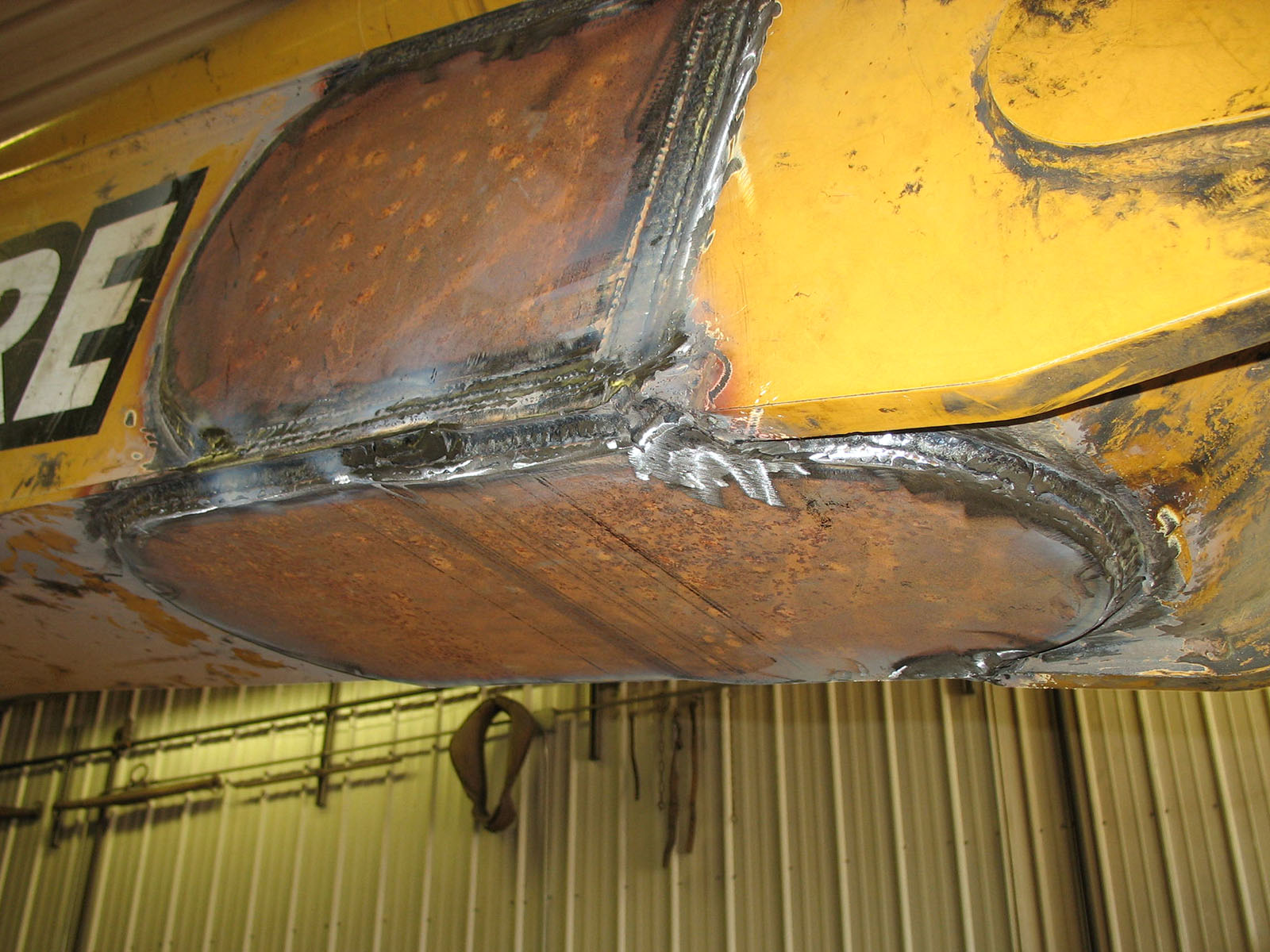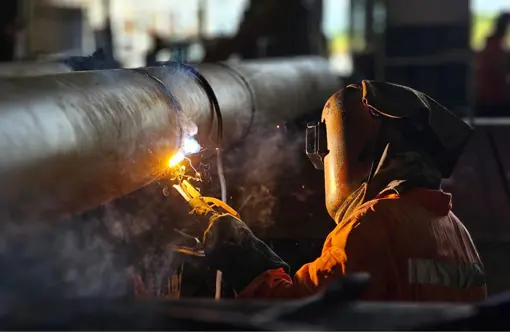Everything about Welding: Key Insights Into Techniques and Finest Practices for Success
Welding includes a selection of techniques, each suited for certain products and applications. Recognizing these techniques, such as GMAW, SMAW, and TIG, is essential for attaining perfect results. In addition, the appropriate tools and safety techniques can not be forgotten. As prep work and troubleshooting play vital functions in the welding procedure, understanding these elements can substantially enhance the top quality of the final product. What are the crucial elements that assure an effective weld?
Comprehending Various Welding Techniques
Welding strategies include a variety of techniques, each fit to specific applications and products. Amongst one of the most common methods are Gas Metal Arc Welding (GMAW), Shielded Steel Arc Welding (SMAW), and Tungsten Inert Gas Welding (TIG) GMAW, additionally understood as MIG welding, is preferred for its speed and versatility, making it ideal for slim materials. SMAW, or stick welding, is favored for its simplicity and performance in exterior environments, particularly with thicker steels. TIG welding supplies accuracy and control, making it ideal for complex job and non-ferrous steels (Montana Mobile Welding and Repair Belgrade). Each method has its one-of-a-kind advantages and considerations, allowing welders to select the very best method based on the job's demands, product type, and desired results. Recognizing these strategies is necessary for successful welding
Crucial Welding Tools and Tools
While different welding strategies need specific abilities, the ideal equipment and devices are similarly essential for attaining high quality results. Important welding devices consists of welding equipments, which vary depending on the strategy-- such as MIG, TIG, or stick welding. Safety gear, including gloves, headgears, and aprons, guarantees safety and security and comfort throughout the process. Furthermore, clamps and fixtures help protect materials in place, making certain precision in welds. Consumables like welding poles, cord, and securing gas are additionally critical elements that influence the quality of the weld. Tools such as mills and cutters assist in surface prep work and post-weld finishing, contributing to a specialist outcome. Purchasing top quality tools ultimately boosts the performance and efficiency of welding jobs.
Safety And Security Practices in Welding
Correct security practices are necessary in the welding sector to protect employees from potential risks. Welders should wear proper personal safety devices (PPE), consisting of helmets with appropriate shading, handwear covers, and flame-resistant apparel. Ample ventilation is vital to minimize direct exposure to hazardous fumes and gases produced during the welding procedure. Additionally, workers ought to be educated in the correct handling of welding devices to avoid accidents. Fire precaution, such as keeping flammable materials far from the welding location and having fire extinguishers conveniently offered, are required. Normal examinations of tools and work spaces can aid recognize potential dangers before they cause crashes. By adhering to these safety and security methods, welders can create a more secure working atmosphere and lessen dangers connected with their trade.
Readying Materials for Welding
Preparing materials for welding is an essential action that substantially influences the top quality and integrity of the last item (Belgrade). Correct prep work entails cleaning the surfaces to eliminate pollutants such as oil, rust, and dirt, which can endanger the weld. Strategies such as grinding, fining sand, or using solvents are frequently employed to attain a clean surface area. Furthermore, guaranteeing that the materials fit with each other snugly is essential; spaces can lead to weak welds. It's also essential to consider the positioning and positioning of the elements, as this will affect the simplicity of welding and the last end result. Choosing the appropriate filler product and ensuring compatibility with the base metals is important for attaining solid, durable welds.
Tips for Getting High-Quality Welds
Accomplishing high-grade welds calls for focus to detail and adherence to best techniques throughout the welding procedure. Correct joint preparation is important, guaranteeing surfaces are tidy and complimentary from contaminants. Picking the ideal filler product and welding technique based upon the base metals is important for excellent bonding. Preserving regular traveling speed and angle while welding can promote and stop defects uniformity. Furthermore, regulating warmth input is important; extreme heat can lead to warping and deteriorated joints. If required, regularly inspecting the welds throughout the procedure allows for prompt modifications. Using ideal post-weld therapies, such as cleaning and anxiety relief, can boost the toughness and stability of the weld, eventually ensuring an effective end result.
Fixing Common Welding Issues
Welding often offers difficulties that can impact the top quality and stability of the final item. Typical issues such as porosity, inconsistent weld beads, and overheating can develop, each needing particular fixing techniques. Understanding these troubles is important for welders to boost their skills and achieve suitable outcomes.
Porosity Problems Described
Although porosity can commonly be find out neglected, it continues to be a vital issue in welding that can jeopardize the honesty of a finished item. Porosity describes the visibility of tiny gas pockets within the weld grain, which can lead and deteriorate the joint to early failure. This trouble generally arises from pollutants, moisture, or inappropriate shielding gas protection during the welding process. To reduce porosity, welders should verify that the base materials are completely dry and tidy, utilize ideal shielding gases, and maintain consistent welding parameters. On a regular basis inspecting the devices and setting can likewise help recognize possible concerns before they show up in the Check This Out weld. Dealing with porosity properly is important for accomplishing solid, resilient welds that fulfill quality requirements.

Irregular Weld Beads
Inconsistent weld beads can substantially influence the high quality and stamina of a completed item. Different elements add to this concern, including inappropriate travel speed, wrong amperage settings, and irregular electrode angles. When the welder moves also promptly, a grain may appear narrow and lack infiltration, while moving as well gradually can cause too much accumulation. Furthermore, utilizing the wrong amperage can lead to either undercutting or too much spatter, both of which compromise weld honesty. The welder's method, such as irregular lantern movement, can additionally bring about unequal bead appearance. To mitigate these problems, welders should concentrate on maintaining steady, controlled activities and making sure appropriate tools settings to attain harmony in their welds. Uniformity is key to achieving reliable and solid welds.
Overheating and Bending Issues
Excessive warm during the welding process can lead to considerable getting too hot and contorting issues, affecting the structural integrity of the workpiece. These issues usually manifest as distortion, which can compromise placement and fit-up, making further assembly testing. Variables contributing to overheating include the choice of welding specifications, such as voltage and take a trip speed, as well as the sort of material being welded. To reduce these problems, welders ought to keep constant travel rate and appropriate warmth input while keeping track of the work surface temperature. Furthermore, pre-heating or post-weld warm treatment can aid relieve tensions triggered by fast cooling - Belgrade Welding. Normal evaluation and adherence to best techniques are crucial in preventing overheating and guaranteeing the long life and integrity of bonded structures
Often Asked Concerns
What Are the Job Opportunities in the Welding Sector?
The welding market provides diverse job opportunities, consisting of settings as welders, teachers, examiners, and designers. Professionals can operate welding shops near me in manufacturing, building, aerospace, and auto industries, profiting from solid demand and affordable wages in numerous duties.
How Can I Boost My Welding Rate Without Sacrificing Top Quality?
To improve welding speed without compromising top quality, one need to practice effective methods, preserve devices, enhance setups, and enhance hand-eye coordination. Routine training and seeking comments can additionally significantly add to attaining much faster, top quality welds.
What Certifications Are Available for Welders?
Many certifications exist for welders, consisting of those from the American Welding Society (AWS), the National Center for Construction Education And Learning and Research Study (NCCER), and different industry-specific organizations. These qualifications improve employability and demonstrate ability effectiveness.
How Does Welding Impact the Qualities of Metals?
Welding influences the buildings of steels by modifying their microstructure, which can bring about changes in hardness, toughness, and ductility. Heat input and air conditioning rates during the process substantially impact these material features.
Can I Bonded Dissimilar Metals With Each Other?
